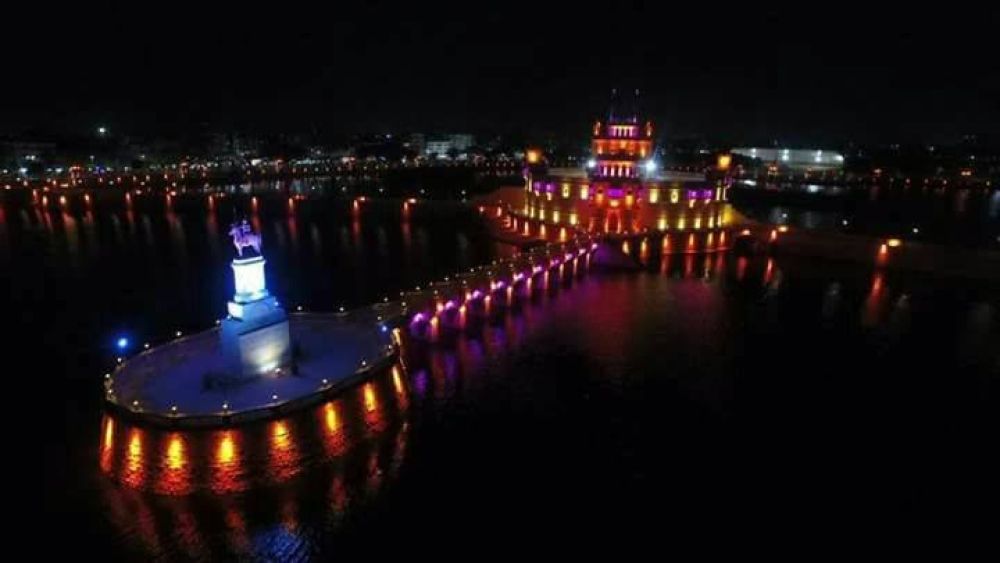

Located in the vibrant city of Jamnagar, Gujarat, the picturesque Lakhota Lake and the historically significant Lakhota Palace are central to the region's tourism. Jamnagar, founded in 1540 AD by Jam Rawal, is steeped in history and culture, with the Lakhota Palace serving as a crown jewel from the past.
The Lakhota Palace was constructed as a fortress in the mid-19th century under the rule of Maharaja Jamsaheb to guard against invasions. It stands as an epitome of the Rajput architecture, surrounded by the tranquil waters of Lakhota Lake. Traditionally, it was built as a drought relief measure and also served as a sanctuary for the Maharaja during times of war. Over the years, the Palace has shifted from a royal stronghold to a repository of history and culture, housing a museum that showcases artifacts, sculptures, and pottery from the 9th to the 18th century.
Over time, the breathtaking view of the Lakhota Lake and the grandeur of Lakhota Palace has been a major attraction for visitors from across the globe. Being a significant reminder of the city's royal heritage, tourists flock to the area to witness the detailed carvings, exquisite architecture, and to gain an insight into Jamnagar's illustrious past. The evenings are particularly enchanting at Lakhota Lake, as the palace lights up and local people enjoy relaxed strolls around the promenade.
The latest trend in tourism at Lakhota Lake and Palace is the integration of cultural events and the promotion of traditional crafts and cuisines. The site has become a center for celebrating local festivals and events, drawing in more visitors who are interested in experiencing local traditions. Additionally, bird watching has become another attraction due to the migratory birds that visit the lake, making it a hotspot for nature enthusiasts. With increased digital connectivity, virtual tours have gained popularity, providing global access to the heritage site, although on-site visits remain irreplaceable for experiencing the true essence of Jamnagar's historical treasures.
Visitors usually plan their trip to the Lakhota Lake and Palace between October and March, which are the best months for pleasant weather. The museum at Lakhota Palace has a nominal entry fee, and the palace remains open for public visitation during designated hours. The recent efforts from the tourism department in improving amenities and infrastructure have made it easier and more comfortable for tourists to explore the rich history and enjoy the serene beauty of Lakhota Lake and Palace.
Note: It is advisable to check for timings and any visitor guidelines beforehand, as these may change based on the ongoing events or maintenance schedules.